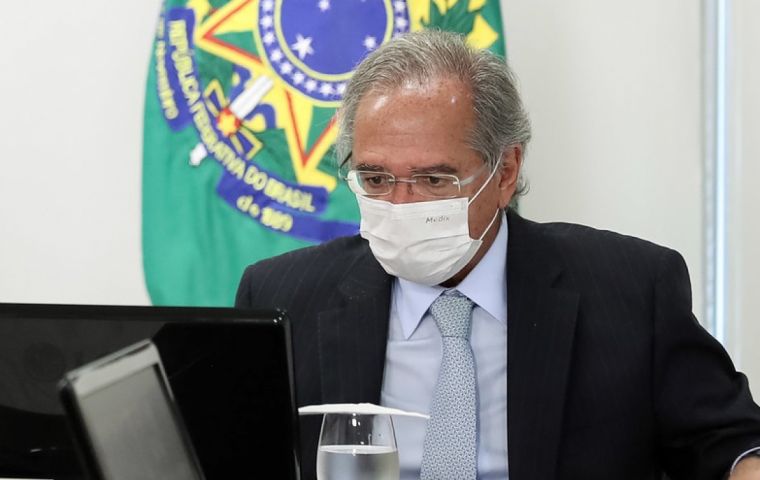MercoPress. South Atlantic News Agency
Brazil lowers economic outlook to minus 4,7% in 2020; pre crisis recovery level will be reached in 2022
 The economy will only return to its pre-crisis levels of December last year by 2022, the ministry said, slower than that suggested by Economy Minister Paulo Guedes.
The economy will only return to its pre-crisis levels of December last year by 2022, the ministry said, slower than that suggested by Economy Minister Paulo Guedes. Brazil’s government lowered its 2020 economic outlook, forecasting a gross domestic product contraction of 4.7%, which would signal the country’s biggest economic crash in more than a century.
The new forecast, based on the expected economic damage from the coronavirus pandemic and related quarantine measures, is sharply lower than its previous estimate of zero growth and more in line with other public and private sector forecasts.
According to economic policy secretary Adolfo Sachsida, -4.7% would be the biggest annual fall since records began in 1900.
“The disruption to production and consumption will have a profound impact on GDP growth in 2020,” the Economy Ministry said in a presentation. “A substantial part of GDP lost during isolation will not be recovered, leading to a substantial drop in GDP in 2020.”
The economy will only return to its pre-crisis levels of December last year by 2022, the ministry said, a slower recovery than that suggested by Economy Minister Paulo Guedes.
The government’s revised 2020 outlook is slightly gloomier than the current consensus from the central bank’s weekly “FOCUS” survey of economists, which is pointing to a GDP contraction this year of 4.1%.
But several investment banks have cut their 2020 outlooks in recent days, with BofA Securities on Wednesday issuing one of the gloomiest projections of all, revising its GDP call to -7.7% from -3.5%.
The Economy Ministry laid out a range of scenarios of how severe the coronavirus impact on activity could be this year, depending on how long the health crisis persists.
The best case scenario was a range of 0.9% growth to a 2.0% fall in 2020 GDP followed by a strong rebound next year, assuming the health crisis is limited to the second quarter.
The worst was a GDP decline of 5% or more if the crisis extends into the second half of this year, followed by a weak recovery in 2021.
Special secretary to the ministry Waldery Rodrigues said the government will update its 2020 debt and deficit forecasts on Friday. The primary deficit, not including interest payments, is likely to be more than 7% of GDP, possibly 8%, he said.




Top Comments
Disclaimer & comment rulesCommenting for this story is now closed.
If you have a Facebook account, become a fan and comment on our Facebook Page!